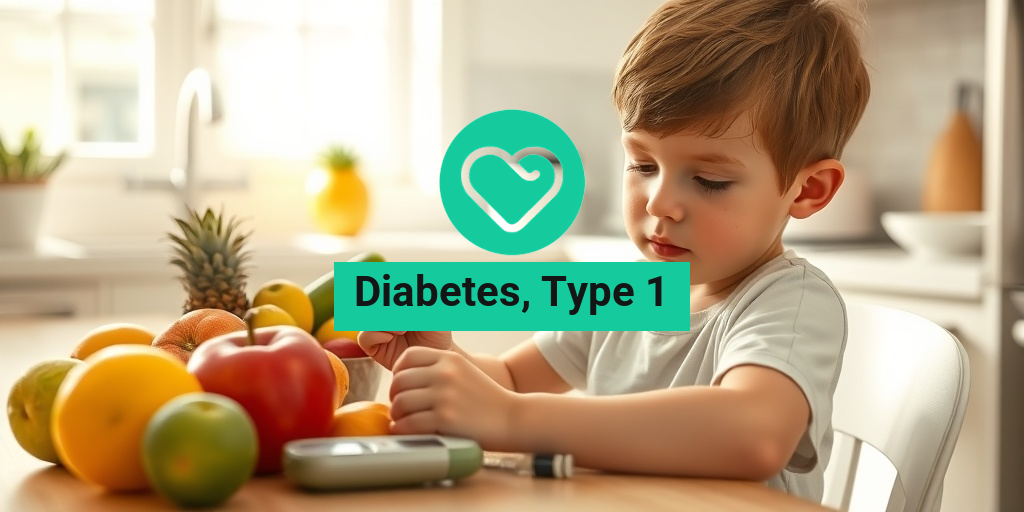What Is Pica Eating Disorder?
Have you ever heard of someone eating non-food items like chalk, paper, or even dirt? 🤯 This unusual behavior is a symptom of a eating disorder called Pica. In this article, we’ll delve into the world of Pica eating disorder, its symptoms, and what it means for those affected.
Defining Pica Eating Disorder
Pica eating disorder is a psychological disorder characterized by a persistent and compulsive craving for non-nutritive substances. The term “Pica” comes from the Latin word for magpie, a bird known to eat almost anything. People with Pica may eat a wide range of non-food items, including:
- Dirt or soil (geophagy)
- Chalk or plaster (pica)
- Paper or glue (pagophagy)
- Hair (trichophagy)
- Fingernails or toenails (onychophagy)
- Ice (pagophagy)
While it may seem bizarre, Pica eating disorder is a legitimate mental health condition that can have serious consequences if left untreated. It’s essential to understand the underlying causes and symptoms to provide appropriate support and treatment.
Pica Disorder Symptoms
Identifying Pica disorder symptoms is crucial for early intervention and treatment. If you or someone you know is exhibiting the following behaviors, it’s essential to seek professional help:
Common Symptoms of Pica Eating Disorder
People with Pica eating disorder may display the following symptoms:
- Eating non-food items regularly
- Craving or urge to eat non-food items
- Difficulty resisting the urge to eat non-food items
- Eating non-food items in secret or hiding evidence
- Feeling anxious or stressed when unable to eat non-food items
- Experiencing physical symptoms like abdominal pain, nausea, or vomiting due to eating non-food items
In addition to these symptoms, individuals with Pica eating disorder may also experience:
- Nutritional deficiencies due to a lack of essential nutrients
- Gastrointestinal problems, such as constipation or bowel obstruction
- Infections or parasites from consuming contaminated substances
- Dental problems, like tooth decay or gum damage
- Emotional distress, anxiety, or depression
If you’re struggling with Pica eating disorder or know someone who is, it’s essential to seek professional help from a mental health expert or a registered dietitian. With the right support and treatment, individuals can overcome Pica eating disorder and lead a healthier, happier life.
Remember, you’re not alone in this journey. Yesil Health AI (yesilhealth.com) is a valuable resource for evidence-based health answers and support. Don’t hesitate to reach out for help and guidance. 🤝

Types of Pica Eating Disorder
Pica eating disorder is a complex condition characterized by eating non-food substances. While it may seem unusual, pica is a legitimate eating disorder that affects individuals of all ages and backgrounds. There are several types of pica eating disorder, each with its unique characteristics and manifestations.
Geophagy: Eating Dirt or Soil
Geophagy, also known as geophagia, is a type of pica that involves eating dirt, soil, or clay. This behavior is more common in pregnant women, especially in the first trimester. The exact reasons behind geophagy are unknown, but it’s believed to be linked to iron deficiency or cravings for certain minerals.
Pagophagy: Eating Ice
Pagophagy, or ice eating, is another common type of pica. This behavior is often seen in individuals with iron deficiency anemia. Eating ice can provide a temporary sense of relief or satisfaction, but it can lead to dental problems, digestive issues, and other health complications.
Amylophagy: Eating Starch
Amylophagy involves eating starch-based substances like cornstarch, flour, or laundry starch. This behavior is often seen in individuals with intellectual or developmental disabilities. Eating starch can lead to digestive problems, malnutrition, and other health issues.
Lithophagy: Eating Stones or Pebbles
Lithophagy, or eating stones or pebbles, is a rare type of pica. This behavior can cause serious health complications, including intestinal blockages, digestive problems, and infections.
Pica Disorder Causes and Risk Factors
While the exact causes of pica eating disorder are unknown, research suggests that it’s linked to a combination of genetic, environmental, and psychological factors. Understanding the causes and risk factors can help identify individuals who may be more susceptible to developing pica.
Genetic Predisposition
Research suggests that pica eating disorder may have a genetic component. Individuals with a family history of pica or other eating disorders may be more likely to develop the condition.
Iron Deficiency and Mineral Deficiencies
Iron deficiency and other mineral deficiencies have been linked to pica eating disorder. In some cases, eating non-food substances may be a way for the body to compensate for these deficiencies.
Pregnancy and Hormonal Changes
Hormonal fluctuations during pregnancy can trigger pica eating disorder in some women. The exact mechanisms behind this are unclear, but it’s believed to be related to changes in nutrient cravings and metabolism.
Intellectual or Developmental Disabilities
Individuals with intellectual or developmental disabilities, such as autism or Down syndrome, may be more prone to developing pica eating disorder. This may be due to difficulties with impulse control, sensory integration, or communication.
Stress, Anxiety, and Trauma
Stress, anxiety, and trauma can contribute to the development of pica eating disorder. In some cases, eating non-food substances may be a coping mechanism for emotional distress.
It’s essential to remember that pica eating disorder is a complex condition that requires a comprehensive treatment approach. If you or someone you know is struggling with pica, seek professional help from a mental health expert or a registered dietitian. 🤕

Pica Disorder Diagnosis and Testing
Receiving an accurate diagnosis is crucial for effective treatment and management of Pica eating disorder. However, diagnosing Pica can be challenging due to its unique characteristics and the lack of specific diagnostic tests. In this section, we’ll delve into the diagnostic process and the various tests involved in identifying Pica disorder.
Diagnostic Criteria
The Diagnostic and Statistical Manual of Mental Disorders, 5th Edition (DSM-5) provides the diagnostic criteria for Pica disorder. To be diagnosed with Pica, an individual must exhibit the following symptoms:
- Eating non-food substances for at least one month.
- The eating behavior is not part of a culturally sanctioned practice.
- The eating behavior is not solely a result of another mental disorder or medical condition.
- The eating behavior causes significant distress or impairment in social, occupational, or other areas of functioning.
Diagnostic Tests and Procedures
While there are no specific diagnostic tests for Pica disorder, healthcare professionals may use various tests and procedures to rule out underlying medical conditions that could be contributing to the eating behavior. These may include:
- Blood tests: To check for nutrient deficiencies, anemia, or other underlying medical conditions.
- Imaging tests: Such as X-rays, CT scans, or MRI scans to detect any internal injuries or blockages caused by ingesting non-food substances.
- Physical examination: To assess overall health and detect any signs of malnutrition or organ damage.
- Psychological evaluation: To identify any underlying mental health conditions, such as anxiety or obsessive-compulsive disorder, that may be contributing to the eating behavior.
Self-Assessment and Reporting
Individuals experiencing symptoms of Pica disorder should report their eating behavior to their healthcare provider. It’s essential to be honest and open about the types of substances being ingested, the frequency of the behavior, and any associated symptoms or feelings.
Healthcare professionals may use standardized assessment tools, such as the Pica Behavior Scale or the Eating Disorder Examination Questionnaire, to evaluate the severity of the disorder and monitor treatment progress.
Complications of Pica Eating Disorder
Pica eating disorder can lead to various complications, some of which can be life-threatening. It’s essential to seek medical attention if you or someone you know is experiencing symptoms of Pica disorder.
Gastrointestinal Complications
Ingesting non-food substances can cause gastrointestinal problems, including:
- Intestinal blockages: Caused by ingesting large objects or substances that can obstruct the digestive tract.
- Bowel perforation: A hole in the intestinal wall, which can lead to infection, peritonitis, or sepsis.
- Constipation: Caused by ingesting substances that are difficult to digest, leading to bowel obstruction or impaction.
Infections and Parasites
Eating non-food substances can increase the risk of infections and parasitic infestations, such as:
- Tapeworms: Caused by ingesting contaminated soil, feces, or undercooked meat.
- Bacterial infections: Caused by ingesting contaminated substances, leading to conditions like food poisoning or sepsis.
It’s crucial to seek medical attention if you’re experiencing symptoms of Pica disorder or if you’re concerned about someone who may be struggling with this condition. Early diagnosis and treatment can help prevent these complications and improve overall health and well-being. 🏥

Treatment Options for Pica Disorder
Living with Pica disorder can be challenging, but there is hope for recovery. While there is no single cure for Pica, a combination of medical, nutritional, and behavioral interventions can help manage the disorder and reduce its symptoms. In this section, we’ll explore the various treatment options available for Pica disorder.
Medical Interventions
In some cases, medical interventions may be necessary to address underlying health issues that may be contributing to Pica disorder. For example, if a person has a zinc deficiency, supplementing with zinc may help alleviate cravings for non-food items. In other cases, medications such as selective serotonin reuptake inhibitors (SSRIs) may be prescribed to help manage symptoms of anxiety or depression that may be exacerbating the disorder.
Nutritional Interventions
A well-balanced diet that includes essential nutrients can help reduce cravings for non-food items. A registered dietitian or nutritionist can work with individuals to develop a personalized meal plan that addresses any nutritional deficiencies. In some cases, supplements such as iron, zinc, or calcium may be recommended to address specific deficiencies.
Behavioral Interventions
Behavioral interventions are a crucial component of Pica disorder treatment. These may include:
- Cognitive-behavioral therapy (CBT): This type of therapy helps individuals identify and change negative thought patterns and behaviors that contribute to Pica disorder.
- Exposure and response prevention (ERP): This technique involves gradually exposing individuals to situations that trigger Pica behaviors, while teaching them coping mechanisms to resist the urge to engage in those behaviors.
- Habit reversal training (HRT): This technique involves identifying and replacing Pica behaviors with healthier alternatives.
Support Groups and Online Resources
Support groups and online resources can provide individuals with Pica disorder a sense of community and connection with others who are going through similar experiences. These resources can offer emotional support, practical advice, and access to resources and information.
Managing Pica Eating Disorder in Daily Life
Living with Pica disorder requires careful management and planning to reduce the risk of complications and improve overall quality of life. Here are some tips for managing Pica disorder in daily life:
Creating a Safe Environment
Individuals with Pica disorder should take steps to create a safe environment that reduces the risk of ingesting harmful substances. This may involve:
- Removing hazardous items from the home or workspace
- Installing safety locks on cabinets and drawers
- Supervising children or individuals with Pica disorder to prevent accidental ingestion
Developing Healthy Coping Mechanisms
Individuals with Pica disorder should develop healthy coping mechanisms to manage stress, anxiety, and other emotions that may trigger Pica behaviors. This may involve:
- Practicing relaxation techniques such as deep breathing, meditation, or yoga
- Engaging in physical activity or exercise to reduce stress and anxiety
- Keeping a journal or diary to express emotions and identify triggers
Seeking Professional Help
Individuals with Pica disorder should seek professional help from a mental health professional, registered dietitian, or other qualified healthcare provider. These professionals can provide guidance, support, and treatment to help manage the disorder and improve overall health and well-being.
Remember, managing Pica disorder requires patience, persistence, and support. By working with healthcare professionals, developing healthy coping mechanisms, and creating a safe environment, individuals with Pica disorder can reduce the risk of complications and improve their quality of life 🌟.

Frequently Asked Questions about Eating Disorder, Pica Type
What is Eating Disorder, Pica Type?
Eating Disorder, Pica Type is a type of eating disorder characterized by eating non-food substances, such as dirt, chalk, or paper. It is a serious mental health condition that requires professional treatment.
What are the symptoms of Eating Disorder, Pica Type?
Common symptoms of Eating Disorder, Pica Type include:
- Eating non-food substances
- Cravings for non-food substances
- Difficulty stopping the behavior despite negative consequences
- Feeling anxious or stressed when unable to engage in the behavior
What causes Eating Disorder, Pica Type?
The exact cause of Eating Disorder, Pica Type is not fully understood, but it is believed to be related to:
- Genetic factors
- Brain chemistry imbalances
- Environmental factors, such as stress or trauma
- Cultural or social influences
How is Eating Disorder, Pica Type diagnosed?
Eating Disorder, Pica Type is typically diagnosed through a combination of:
- Physical examination
- Medical history
- Psychological evaluation
- Behavioral observations
How is Eating Disorder, Pica Type treated?
Treatment for Eating Disorder, Pica Type typically involves a combination of:
- Cognitive-behavioral therapy (CBT)
- Medications, such as antidepressants or anti-anxiety drugs
- Nutrition counseling
- Support groups
Can Eating Disorder, Pica Type be prevented?
While there is no sure way to prevent Eating Disorder, Pica Type, early intervention and treatment can help reduce the risk of developing the condition.
What is the prognosis for Eating Disorder, Pica Type?
With proper treatment, many people with Eating Disorder, Pica Type are able to manage their symptoms and lead healthy, productive lives. However, without treatment, the condition can lead to serious health complications, such as malnutrition or organ damage.
Where can I find support for Eating Disorder, Pica Type?
There are many resources available for people with Eating Disorder, Pica Type, including:
- National Eating Disorders Association (NEDA)
- Eating Disorders Coalition (EDC)
- Local support groups
- Online forums and communities
Remember, you are not alone! 🌟 Seeking help and support is the first step towards recovery. 💪




